To change the appearance of the page, edit the styles of the corresponding elements (in most cases by using the "Main Frame" Style Zone).
To change the menu’s links: edit, copy-paste, or delete the Link Elements within.
To hide an element without deleting it, use its property Visible.
To change the menu’s links: edit, copy-paste, or delete the Link Elements within.
To hide an element without deleting it, use its property Visible.

We all first begin to take underwater pictures to keep some souvenirs of our holidays. Then, when we leave farther and farther, we want to improve the quality of our pictures to have the best traces of all the wonderful things we can see underwater. We become more and more demanding and try to make our picts become more and more beautiful.

History
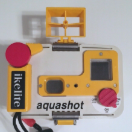
Underwater pictures taken in Hurghada and Safaga were made with an Ikelite case for throwable camera (mainly KODAK 200 ASA cameras).
- Advantages It's cheap and all we can loose in case of leak is an inexpensive camera.
- Disadvantages: The picture quality is very poor. We really need a good visibity to produce some picts. The housing is not very well made. I broke mine after 1 year. The viewfinder is very bad (just a cross)...
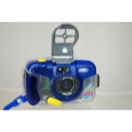
Underwater pictures taken in Madagascar, Burma and South Egypt cruise were made by a Sea&Sea MX5 with mainly Fuji Supéria XTRA 400 ASA 24x36 films.
- Advantages It's cheap (a bit more expensive than the Ikelite thus). As it is very small, it is easy to bring with you underwater.
- Disadvantages: The picture quality is very poor. Deeper than 10m, it is no need to hope to have something interesting... The flash is always set to ON. Each time there is plancton, the quality of the image is deprecated. You cannot clearly centre the picture as the viewfinder is not precise at all.
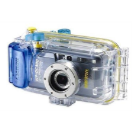
Underwater pictures taken in Malaysia were made by a digital camera Canon Powershot S45. Digital photography created a revolution in the world of underwater picture. At least, we have a good view of what we want to take. At least we can remove all the bad shots in order to keep only the good (I mean neither blurred nor deprecated) one.
- Advantages: The price is not so expensive. We can begin to make easily some tests by modifying the aperture vs. speed vs. ISO... The internal strobe is not so bad for the proxy photography.
- Disadvantages: We see very quickly the limitation of the internal strobe: we cannot use it for big fishes... The housing quality is not very good also. We must be very careful about the leaks because the o-ring is not very well press on these kind of small housings. The maximum depth is "only" 40m.
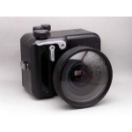
Underwater pictures taken in Philippines, Australia and Sudan were made by a digital camera Canon Powershot G5 and a housing UMIE DCH-701. I also used an external strobe INON D-180 close-up lens x2 INON UCL-330.
- Advantages: The G5 is a high-end digital camera on which lots of parameters can be modified (aperture, speed, ISO, RAW...) The housing has a small volume and the back door is closed using 2 locks on both sides of the housing. This avoids the bad pinching of the o-ring like in the other housings. It has also a maximum depth of 60m. The external strobe allows me to decentre the lightning direction in order to avoid the perturbations generated by the plancton diffraction. Its power allows me to enlighten farther the scene. The close-up lens fit directly on my housing port with the M67 filter, and it gives great results (see my pictures of the Philippines).
- Disadvantages: It becomes quite expensive to tune its digital camera... The housing is bigger than the one used for small digital cameras, but its size remains acceptable. As for all the digital camera, the main problem is the time it takes to make the focus and the time for the shutter release... I miss a lot of pictures because of that...
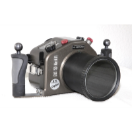
Choosing to change to a digital SLR for taking underwater pictures is a very hard decision. The price of the corresponding housing is very expensive and there are lots of constraints to accept. You need to ask to yourself if you like diving and take sometimes some pictures or if you want that taking pictures becomes the main part of your dives. After 1 year of hesitations (and money savings), I decided to buy a UK Germany housing for my Canon EOS20D, a UK Germany housing for my Canon 550EX strobe and an INON Z220 second strobe. My first pictures made with this material are presented in my Indonesia pictures gallery. Since 2009, I changed my reflex camera for a Canon 5DMkII and its dedicated UK-Germany housing. I also use use 2 new Inon Z240 strobes.
- Advantages: The pictures quality. With this kind of material, we can really make macro photography. The focus speed is very fast with the ultra sonic technology, and the shutter release speed is immediate. The noise management of the EOS 20D is very good with the Digic II chipset which is very important for underwater photography. Very heavy on the boat, the housing becomes very light underwater. The housing is very well made and very robust. All the functions are accessible through the housing buttons, and the camera fits exactly in it. The housing buttons are all very soft and we can feel exactly when we want to make the focus and when we want to take the picture.
- Disadvantages: This kind of material is very expensive. It is also quite heavy and it can be a problem especially when you have to take a plane. It will take also a huge part of your free time during your diving holidays. Between 2 dives, you do not have some time left to go to take a nap because you will have to reload all the batteries, to save the pictures on a hard drive etc.
To "activate" displaying of an arrow, use its property "Visible"
Is digital better than film?
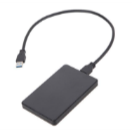
One of the most interesting thing with digital underwater photography is that you can make in one dive as many pictures as you want (you just need a large memory card). You are not stopped by the maximum of 36 pictures that can afford a film camera, and it helps you making lots of tries without having any regrets. But after having taken such a large number of picts, where can you store them when you will be back on the boat ? There are 3 solutions:
- Laptop computer: It is the heaviest solution (3kg) but with the big screen of the laptop, we can begin to remove the blurred picts and make a first filtering on the good picts.
- Standalone data storage: These small external hard drives of 20 Giga bytes and more can store more than 2000 RAW picts: enough for 3 weeks of diving holidays ;-)
- Onboard PC: lots of clubs and boats have their own PC and you can burn a DVD containing all your picts ...
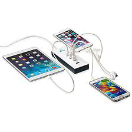
People who use film camera do not need any power supply during all their trip. But for digital camera equipment, we need electrical power supply all day long to reload batteries for the camera, for the Laptop etc.
Digital image processing
Before having some good underwater picts, we need to use image processing software to clean them and to restore the real colours for example. I will try to propose soon a small explanation of the basic functions that can be used to improve the underwater image quality so do not hesitate to visit my web page in some weeks to check my advices ;-)


